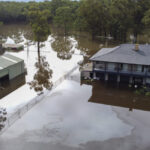Despite the combined effects of around $25 billion of pandemic and natural catastrophe-related losses as well as compromised investment returns, a group of reinsurers studied by Aon reported positive earnings for 2020 and an increased capital base, aided by access to new funding.
However, this demonstrated resilience in 2020 “cannot hide the fact that recent reinsurance sector results have been poor,” said Aon’s study, titled Aon’s Reinsurance Aggregate (ARA) — Results for the Year to December 31, 2020. The study tracks the financial results of 23 of the world’s leading reinsurers. (See below for a list of these companies).
Aon explained that these reinsurers reported a pre-tax profit of $6.9 billion in 2020, around a third of the level seen in 2019, which was driven by a P/C underwriting loss of $5.9 billion and a 23% reduction in the overall investment result to $27.6 billion. The capital market recovery following the first quarter was sufficient to drive the ARA reinsurers to overall net income of $5.4 billion, representing a return on equity of 2.3% for 2020, which, the Aon study said, was substantially below the median cost of capital at year-end 2020.
For 2020, the group’s net P/C combined ratio stood at 103.4%, with COVID-19 losses of $14.0 billion contributing 8.0 percentage points to the combined ratio and natural catastrophe losses of $8.7 billion adding another 5.0 percentage points. Further, over the last four years, the ARA combined ratio averages 102.3%, while return on equity averages 4.8%, representing a significant shortfall relative to the cost of capital.
The total impact of COVID-19 losses across the ARA constituents in 2020 was $16.4 billion, which included $2.4 billion of losses emanating from life and health business.
Headwinds in 2021
The study said that COVID-19 will continue to provide a headwind to earnings in 2021. “[The] uncertainty over the ultimate extent and distribution of related losses will be a factor in maintaining underwriting discipline, alongside deteriorating trends in casualty reserving, the impact of climate change and low interest rates.”
“Headline results have been poor in three of the last four years, but the underlying picture is now improving as recent adjustments to pricing and other terms and conditions feed through,” said Mike Van Slooten, head of Business Intelligence for Aon’s Reinsurance Solutions, in a statement.
Key highlights of ARA reinsurers’ collective financial performance in 2020 include:
- Total gross premiums written (GPW) increased by 6% to $294 billion.
- Property and casualty premiums increased by 7% to $223 billion, comprising primary insurance premiums of $107 billion (+6%) and assumed reinsurance premiums of $116 billion (+7%).
- Total ARA capital rose by 6% to $270 billion at the end of 2020, which was split between equity of $211 billion (a 4% increase) and debt of $59 billion (a 16% increase). This generated a debt-to-total-capital ratio of 21.9%, up from 20.1% at the end of 2019.
- Ordinary investment yield fell to a new low of 2.3%, driven by the capital market volatility associated with COVID-19 and the impact of emergency cuts in interest rates.
- The stock market value of the listed ARA reinsurers at April 8, 2021 remained 6% below the level seen at the beginning of 2020.
- Prior year P/C reserves developed favourably by $2.5 billion in 2020 but the underlying trend is downward, driven principally
by the impact of social inflation on U.S. casualty reserves. Development of prior year reserves remains favourable overall, but support from this source continues to decline. Seven ARA companies reported adverse development in 2020.
The study estimated that global reinsurer capital increased to a new high of $650 billion at the end of 2020, driven by the strong capital market recovery from the COVID-19 economic shock in the first quarter of 2020, new equity issuance and U.S. dollar depreciation. This capital figure includes both traditional and alternative forms of reinsurer capital.
The 23 companies included in the ARA study are Alleghany, Arch, Argo, Aspen, AXIS, Beazley, Everest Re, Fairfax, Hannover Re, Hiscox, Lancashire, Mapfre, Markel, Munich Re, PartnerRe, QBE, Qatar Insurance, RenRe, SCOR, Sirius, Swiss Re, Third Point Re and W.R. Berkley. (On Feb. 26, 2021, Sirius and Third Point Re merged to form SiriusPoint).
The companies in ARA study underwrite just over 50% of the world’s life and non-life reinsurance premiums and are therefore a reasonable proxy for the sector as a whole, explained Aon.
Source: Aon
*This story ran previously in our sister publication Insurance Journal.





















 First Atlantic Hurricane Forecast for 2026 Suggests Season Close to 30-Year Norm
First Atlantic Hurricane Forecast for 2026 Suggests Season Close to 30-Year Norm  How Insurers Can Avoid Post-Merger Technology Failure
How Insurers Can Avoid Post-Merger Technology Failure  What to Expect in 2026: U.S. P/C Results More Like 2024
What to Expect in 2026: U.S. P/C Results More Like 2024  Five AI Trends Reshaping Insurance in 2026
Five AI Trends Reshaping Insurance in 2026 










